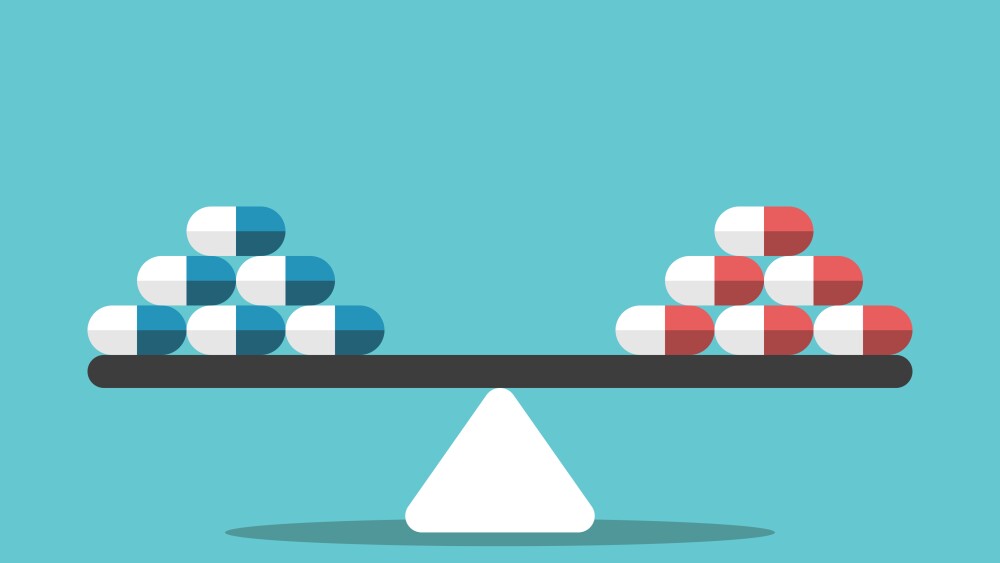Biogen Inc. (Nasdaq: BIIB) today announced that The New England Journal of Medicine (NEJM) has published detailed results from the Phase 3 VALOR study and the combined analysis of VALOR and its open label extension (OLE) study evaluating tofersen for the treatment of superoxide dismutase 1 (SOD1) amyotrophic lateral sclerosis (ALS).
- Publication includes the Phase 3 VALOR SOD1-ALS trial and its open-label-extension study, underscoring the importance of these longer-term data
- 12-month data show earlier initiation of tofersen slowed decline across critical measures of function and strength in people diagnosed with SOD1-ALS
- Results offer important learnings regarding the biology of SOD1-ALS and design of ALS clinical trials
CAMBRIDGE, Mass., Sept. 21, 2022 (GLOBE NEWSWIRE) -- Biogen Inc. (Nasdaq: BIIB) today announced that The New England Journal of Medicine (NEJM) has published detailed results from the Phase 3 VALOR study and the combined analysis of VALOR and its open label extension (OLE) study evaluating tofersen for the treatment of superoxide dismutase 1 (SOD1) amyotrophic lateral sclerosis (ALS). There is currently no treatment targeted for SOD1-ALS.
“I see three key take home points from these data. First, tofersen clearly leads to lowering of SOD1 protein, as would be expected. Second there is substantial lowering of neurofilament levels, which I interpret as potentially slowing the underlying disease process. And third, there is a meaningful clinical benefit when looking at the later time points in the open label extension,” said Timothy Miller, M.D., Ph.D., principal investigator of VALOR and ALS Center co-Director at Washington University School of Medicine, St. Louis. “We are grateful to the dedication from participants, their families, and the sites for taking part in this important study.”
Data from the combined analysis were previously presented at the European Network to Cure ALS (ENCALS) annual meeting and included within Biogen’s New Drug Application for tofersen that was recently accepted for priority review by the U.S. Food and Drug Administration. The application was given a Prescription Drug User Fee Act action date of January 25, 2023.
“The ALS community has been actively pursuing new medicines for decades. To have data like these published in NEJM gives us energy and hope. We are now seeing in the data what we suspected about tofersen for a long time – that it has the potential to make a clinical difference for people living with SOD1-ALS,” said Merit Cudkowicz, M.D., co-principal investigator of the VALOR trial and co-founder of the Northeast ALS Consortium, Director of the Healey & AMG Center for ALS and Chair of Neurology at Massachusetts General Hospital and the Julieanne Dorn Professor of Neurology at Harvard Medical School. “The lowering of neurofilament, a marker of axonal injury and neurodegeneration along with the clinical data, highlights the potential of tofersen.”
About VALOR and the OLE
VALOR was a six-month Phase 3, randomized, double-blind, placebo-controlled study to evaluate the effects of tofersen 100 mg in adults with ALS associated with a SOD1 mutation. In total, 108 participants were randomized in VALOR (n=72 to tofersen 100 mg and n=36 to placebo). Of these participants, 95 enrolled in the ongoing OLE. At the time of the analysis all participants had an opportunity for at least 12 months of follow-up, with a median exposure to tofersen of approximately 20 months (range: 1 – 34 months).
The primary endpoint of VALOR was change from baseline to week 28 in ALS Functional Rating Scale-Revised (ALSFRS-R) total score. Secondary endpoints included changes in total cerebrospinal fluid SOD1 protein concentration, plasma neurofilament light chain (NfL), slow vital capacity and handheld dynamometry in 16 muscles.
As previously reported in October 2021, VALOR did not meet the primary endpoint. However, trends of reduced disease progression across multiple secondary and exploratory endpoints were observed. The combined VALOR and OLE 12-month data, in which the clinical analyses adjusted for neurofilament levels as a marker of the disease progression rate at baseline, showed sustained reductions in SOD1 protein (a marker of target engagement) and neurofilament (a marker of neurodegeneration) and slowed decline in clinical function, respiratory function, strength, and quality of life with earlier initiation of tofersen.
In the 12-month data, the most common adverse events (AEs) in participants receiving tofersen in VALOR and the OLE study were procedural pain, headache, pain in the arms or legs, falls, and back pain. Most AEs in both VALOR and the OLE were mild to moderate in severity. Serious neurologic events including myelitis, chemical or aseptic meningitis, radiculitis, increased intracranial pressure and papilledema, were reported in 6.7 percent of participants receiving tofersen in VALOR and its OLE.
About Tofersen
Tofersen is an antisense drug being evaluated for the potential treatment of SOD1-ALS. Tofersen binds and degrades SOD1 mRNA to reduce synthesis of SOD1 protein production. In addition to the ongoing open label extension of VALOR, tofersen is being studied in the Phase 3 ATLAS study designed to evaluate whether tofersen can delay clinical onset when initiated in presymptomatic individuals with a SOD1 genetic mutation and biomarker evidence of disease activity. Biogen licensed tofersen from Ionis Pharmaceuticals, Inc. under a collaborative development and license agreement.
About Amyotrophic Lateral Sclerosis and SOD1-ALS
Amyotrophic lateral sclerosis (ALS) is a rare, progressive and fatal neurodegenerative disease that results in the loss of motor neurons in the brain and the spinal cord that are responsible for controlling voluntary muscle movement. People with ALS experience muscle weakness and atrophy, causing them to lose independence as they steadily lose the ability to move, speak, eat, and eventually breathe. Average life expectancy for people with ALS is three to five years from time of symptom onset.1
Multiple genes have been implicated in ALS. Genetic testing helps determine if a person’s ALS is associated with a genetic mutation, even in individuals without a family history of the disease. Currently, there are no genetically targeted treatment options for ALS. Mutations in the SOD1 gene are responsible for approximately 2 percent of the estimated 168,000 people who have ALS globally (SOD1-ALS).2 Life expectancy in SOD1-ALS varies widely with some patients surviving less than a year.3
Biogen’s Continuous Commitment to ALS
For over a decade, Biogen has been committed to advancing ALS research to provide a deeper understanding of all forms of the disease. The company has continued to invest in and pioneer research despite making the difficult decision to discontinue a late-stage ALS asset in 2013. Biogen has applied important learnings to its portfolio of assets for genetic and other forms of ALS, with the goal of increasing the probability of bringing a potential therapy to patients in need. These applied learnings include evaluating genetically validated targets in defined patient populations, pursuing the most appropriate modality for each target and employing sensitive clinical endpoints. Today, the company has a pipeline of investigational drugs being evaluated in ALS, including tofersen and BIIB105.
About Biogen
As pioneers in neuroscience, Biogen discovers, develops, and delivers worldwide innovative therapies for people living with serious neurological diseases as well as related therapeutic adjacencies. One of the world’s first global biotechnology companies, Biogen was founded in 1978 by Charles Weissmann, Heinz Schaller, Sir Kenneth Murray, and Nobel Prize winners Walter Gilbert and Phillip Sharp. Today, Biogen has a leading portfolio of medicines to treat multiple sclerosis, has introduced the first approved treatment for spinal muscular atrophy, and developed the first and only approved treatment to address a defining pathology of Alzheimer’s disease. Biogen is also commercializing biosimilars and focusing on advancing one of the industry’s most diversified pipelines in neuroscience that will transform the standard of care for patients in several areas of high unmet need.
In 2020, Biogen launched a bold 20-year, $250 million initiative to address the deeply interrelated issues of climate, health, and equity. Healthy Climate, Healthy Lives™ aims to eliminate fossil fuels across the company’s operations, build collaborations with renowned institutions to advance the science to improve human health outcomes, and support underserved communities.
We routinely post information that may be important to investors on our website at www.biogen.com. Follow us on social media - Twitter, LinkedIn, Facebook, YouTube.
Biogen Safe Harbor
This news release contains forward-looking statements, including statements made pursuant to the safe harbor provisions of the Private Securities Litigation Reform Act of 1995, including statements about results from the Phase 3 VALOR study of tofersen or its OLE; the potential clinical effects of tofersen; the potential benefits, safety and efficacy of tofersen; the clinical development program for tofersen; the potential approval of tofersen; the identification and treatment of ALS; our research and development program for the treatment of ALS; the potential of our commercial business and pipeline programs, including tofersen; and risks and uncertainties associated with drug development and commercialization. These forward-looking statements may be accompanied by words such as “aim,” “anticipate,” “believe,” “could,” “estimate,” “expect,” “forecast,” “intend,” “may,” “plan,” “potential,” “possible,” “will,” “would” and other words and terms of similar meaning. Drug development and commercialization involve a high degree of risk and only a small number of research and development programs result in commercialization of a product. Results in early stage clinical trials may not be indicative of full results or results from later stage or larger scale clinical trials and do not ensure regulatory approval. You should not place undue reliance on these statements or the scientific data presented.
These statements involve risks and uncertainties that could cause actual results to differ materially from those reflected in such statements, including without limitation, uncertainty of success in the development and potential commercialization of tofersen; the risk that we may not fully enroll our clinical trials or enrollment will take longer than expected; unexpected concerns may arise from additional data, analysis or results obtained during our clinical trials; regulatory authorities may require additional information or further studies, or may fail or refuse to approve or may delay approval of our drug candidates, including tofersen; the occurrence of adverse safety events; the risks of unexpected hurdles, costs or delays; failure to protect and enforce our data, intellectual property and other proprietary rights and uncertainties relating to intellectual property claims and challenges; product liability claims; and the direct and indirect impacts of the ongoing COVID-19 pandemic on our business, results of operations and financial condition. The foregoing sets forth many, but not all, of the factors that could cause actual results to differ from our expectations in any forward-looking statement. Investors should consider this cautionary statement, as well as the risk factors identified in our most recent annual or quarterly report and in other reports we have filed with the U.S. Securities and Exchange Commission. These statements are based on our current beliefs and expectations and speak only as of the date of this news release.
We do not undertake any obligation to publicly update any forward-looking statements, whether as a result of new information, future developments or otherwise.
References:
- Brown RH, Al-Chalabi A. Amyotrophic Lateral Sclerosis. N Engl J Med. 2017 Jul 13.
- Brown CA, Lally C, Kupelian V, Flanders WD. Estimated Prevalence and Incidence of Amyotrophic Lateral Sclerosis and SOD1 and C9orf72 Genetic Variants. Neuroepidemiology. 2021.
- Brown CA, Lally C, Kupelian V, Flanders WD. Estimated Prevalence and Incidence of Amyotrophic Lateral Sclerosis and SOD1 and C9orf72 Genetic Variants. Neuroepidemiology. 2021.
| MEDIA CONTACT: Dan Haro | INVESTOR CONTACT: Mike Hencke |






